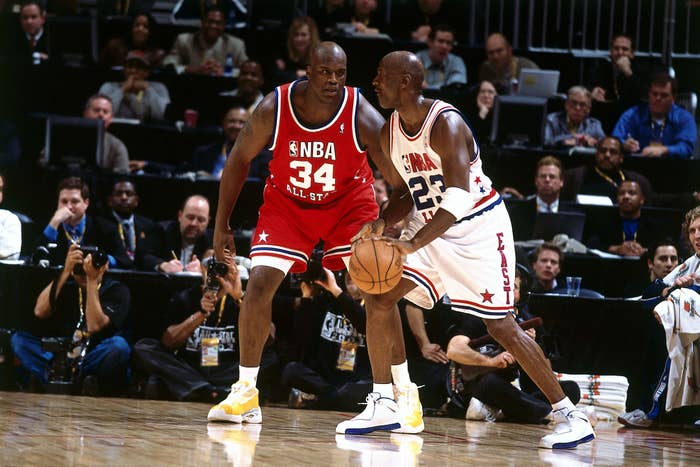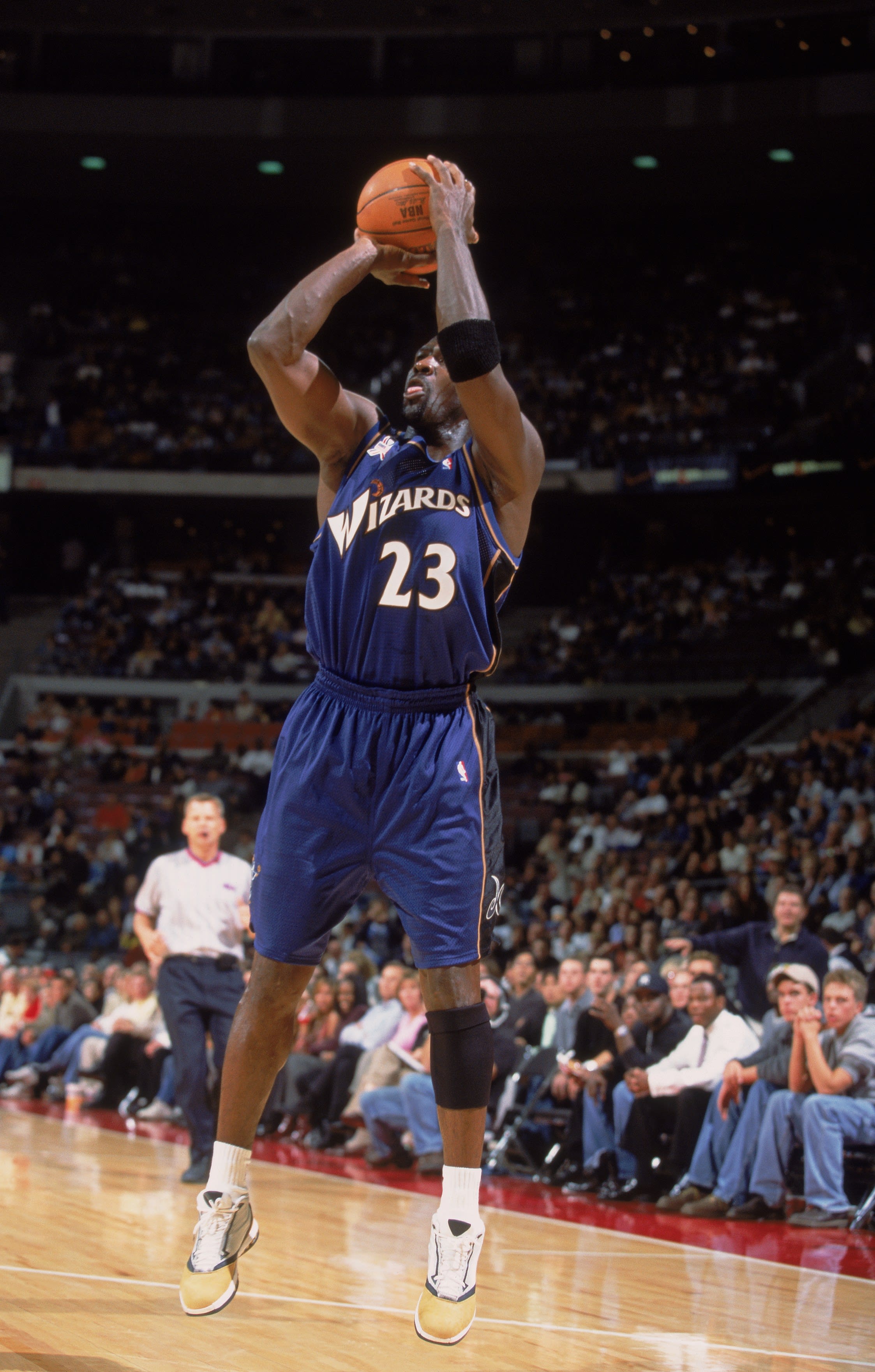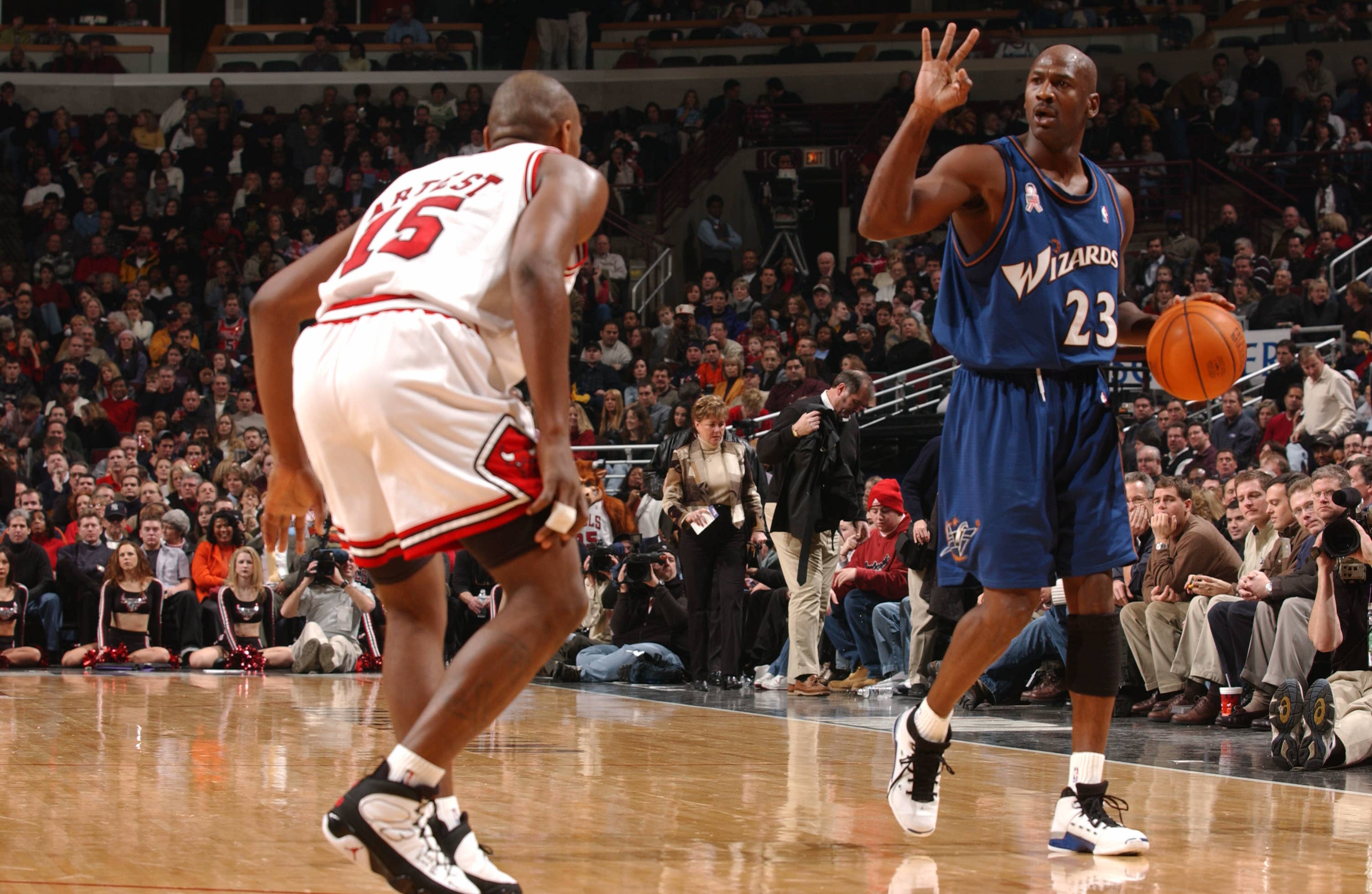
Virtually every aspect of Michael Jordan’s second NBA comeback as a member of the Washington Wizards in 2001 is worthy of a re-assessment, but perhaps nothing deserves it more than the Air Jordans he wore on-court. Skipping over the oft-maligned XV, he wore the XVI, XVII and XVIII before retiring for the final time in 2003. And, if the most coveted Air Jordans remain those that Mike himself wore on the court, why aren’t those three held in the same regard as the first 14?
The XVI was the final holdover of a sort. Despite being the first Air Jordan since the II to not be designed by Tinker Hatfield—Wilson Smith was the lead on the XVI—it still had familiar Air Jordan touches, from the clear outsole to the black and red launch colorway. The removable shroud gave the wearer a multitude of looks, and the magnetic snaps that held it on gave the shoe a futuristic feel. Unfortunately, some other elements of the shoe weren’t quite as timeless—the squared-off toe that was so on-brand in the early 2000s dates it now. It also wasn’t introduced by Jordan himself, as it had been out for months by the time he donned a pair for the 2001 preseason. It’s a shoe more connected with Ray Allen or Michael Finley (or Darius Miles and Quentin Richardson) than Jordan himself.
The XVII though, that marked the start of a new era. Retailing for $200 and selling in a faux metal briefcase, the XVII first launched in a white, blue and black Wizards colorway. Again designed by Smith, the shoe was based on the interests of a now nearly 40-year-old Jordan—jazz music, complete with musical notes on the removable lace covers, and his Aston Martin. It was a luxurious shoe with the usual attention to detail that a flagship Air Jordan receives, but things were different in 2002.

For starters, there was the matter of retro. What had started slowly in 1994 when Nike re-released the first three Air Jordans to (mostly) complete disinterest had become a juggernaut. Even Jordan himself wasn’t immune to the pull of retro, lacing up re-issues of several of his older signature models over his two seasons with the Wizards. Back in the ‘80s and ‘90s, a new Air Jordan stood alone—now it had to compete not only against other, younger players’ signature models, but against earlier and perhaps better (and definitely cheaper) Air Jordan predecessors. The XVII may have been the latest, but you’d have been hard pressed to find an Air Jordan fan who’d claim it was the greatest.
The Air Jordan XVIII did away with the XVII’s briefcase (as well as the XVII’s $200 price tag), although it still came with extras. The debut model, in black suede with royal blue trim, came with a towel and a suede brush inside a drawer-style box. Inspired by both expensive driving shoes and the cars one would drive while wearing them, as well as bespoke dress shoes, the XVIII was designed by Tate Kuerbis—who became Jordan’s lead designer again with the XXX1. Once again the laces were hidden, this time under a fixed flap that connected to the tongue with a XVI-style magnetic snap. Wing-shaped vents opening on metallic mesh windows allowed for a little air to get in.

The XVIII was an extremely well-made shoe that played as well as it looked. Fitted with a carbon plate and a full Zoom bag (doubled-stacked in the heel, even), it was a decided step up from the XVII. Later leather versions with all-white uppers mixed smooth and tumbled leathers. If the goal of Jordan was to meld sports and luxury, the XVIII did it better than most.
So why didn’t Jordan’s game shoes from the early 2000s pop off like earlier models? Again there was retro to contend with, back when retro models were a cheaper alternative to the current shoe. Even the commercials for the game shoe looked to the past. And given that Air Jordan was a shoe long linked with memorable on-court moments, there weren’t a lot of new ones. Jordan’s Wizards weren’t a playoff team, and his All-Star appearances featured a missed breakaway dunk and a should-have-been last shot that wasn’t. It’s worth noting that Kobe Bryant also wore Air Jordans in the 2003 All-Star Game—only he wore True Blue IIIs.
With the passage of time, however, maybe these late-period Jordans will finally get their just due. Like Jordan’s Wizards career—during which he averaged 21, 4, and 6—they deserve a second look.

